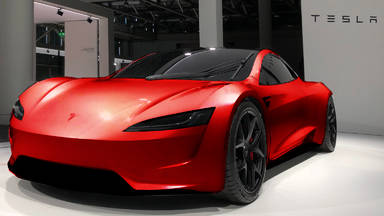
Apple is known for making big, splashy announcements when it unveils a groundbreaking piece of new technology like the iPod or iPad. Oddly enough, the Cupertino giant made an equally revolutionary announcement last year, but one that largely escaped the general public's attention.
It was confirmed at the company's annual global developer conference that Apple will begin designing and manufacturing its own chips for Mac computers. To be clear, it's not just tech geeks and tiresome apple fanboys who need to be aware of what the announcement means and what impact it will have. That's why we're putting on our black turtleneck today addressing a quiet audience to explain why Apple is making its own chips.
Apple's brand new in-house chip, the M1, was first introduced on the company's MacBook Air and Mac Mini series last November marking a significant departure.
This new chip on the block was designed using what is called the ARM architecture, which is very different from intel's preferred x86 architecture.
what actually makes the difference?
in technical terms, ARM uses what hardware geeks refer to as RISC (or reduced instruction-set computing) layout. The x86 uses a CISC (or complex instruction-set computing) arrangement. In a very broad language, this means that Intel's x86 has a more complicated architecture than ARM chips. Therefore ARM performs fewer distinct mathematical functions (or instructions) than the x86, which has a lot more built-in instructions.
On an Arm chip, This lack of instructions must be made up for inefficient Software design versus hardware to be balanced. From a microchip point of view, the ability of the x86 chip to execute a larger number of instructions certainly makes it more powerful, but at the expense of consuming much more power. For this reason, large, powerful PCs always need noisy fans and a constant mains power supply.
They can do many of the same things, but they take a little longer and a few more passes as they have a more concise menu of instructions. ARM chips, however, have caught up on the speediness with the latest ARM-based iPhones and iPads delivering performance similar to laptops.
This shouldn't come as a surprise as Apple worked tirelessly since 2010 to refine its iPhone and iPad based ARM chips. Now the moment seems to have come when ARM chips are ready to make the leap from mobile to the more traditional PCs.
Why are they doing this?
Because the two competing chip architectures ARM and x86 work so differently that the software design for one doesn't work for the other. This means that software that works like a dream on your iPad wouldn't work on your Mac. Of course, you could use an emulator, but you'd have to put up with a noticeable drop in performance and speed.
But from now on, since both PC and mobile Apple devices use ARM chips, Mac users can enjoy a far more seamless experience of sharing tasks between their devices and this kind of straightforward, easy-to-use interface is exactly what millions of fans around the world are enjoying.
Apple has been the standard bearer for slimmed-down, elegant devices that are both powerful and easy on the eyes. It's believed that arm-based laptops could be even more razor-thin than the current MacBook Air range within a few years. Finally being able to do without bulky hardware, like the fans needed to keep that thirsty x86 chip cool.
Another benefit arm chips will bring to the next generation of Mac computers involves the science of neural engines. The neural engine found on the m1 is designed to run machine learning code with substantially greater efficiency. The upshot of this, from a user's point of view, is that photo and video editing packages will work a lot snappier. Similarly tasks which require processing and analysis will work better, like speech recognition within siri or sourcing all the cat pictures in your photo library.
Beyond the user experience there are sound corporate reasons why apple is making the switch from Intel's x86 to ARM-based chips. Apple is the world's most valuable company, in part because it does so much for itself, from software to the operating system to the mouse. This kind of vertical integration has only now been perfected as it designs its own chips that serve the company well.
Apple now is able to break away from its helpless reliance on Intel's design goals and logistics plans. Designers working on these razor-thin next-generation laptops will have a lot more leverage and flexibility on the final chip. Over time, this will in time lead to faster, more efficient integrated software.
Intel, for their part, have suffered a number of years. In November 2019, the company's executive vice president of sales and marketing, Michelle Johnston-Holthaus, was forced to issue a groveling apology to its partners after a delay in delivering its current batch of CPUs.
That's not all, they don't even operating at the cutting edge anymore. While Apple's latest generation of ARM chips came with five nanometer transistors, Intel has struggled even to shrink its products down to seven nanometers and instead use ten nanometer chips technology at the moment.
For perspective on this, 5 nanometers is roughly the size of 10 large atoms. The smaller the transistor, the more manufacturers can fit on the chip which impacts efficiency and ultimately the speed.
While Intel languishes, the Apple chip manufacturing partner TSMC, according to reports, is working on a manufacturing process that can mass-produce two nanometer transistors over the next decade.
This is a real breakthrough level science happening on apple's watch. A possible downside to Apple's move to the arm is the fact that software designed for the earlier Macs with x86 chips simply won't work. Apple wants to emphasize that great developers are already reworking household name apps like Adobe Photoshop and Microsoft Office. For everything else, Apple's own Rosetta software should be sufficient as an emulator for most purposes.
The current conventional wisdom among tech professionals is that regular consumers won't notice much of a difference after the transition, but more professional users may want to wait a bit before buying an Arm Mac.
For now, higher spec Macs continue to ship with Intel hardware, but the writing is clearly on the wall for this particular arrangement. Apple is expected to replace Intel chips in the next few years. Apple is making its own chips to get rid of the hassles of Intel manufacturing and to realize the ultimate dream of full vertical integration.
That's only half the story, although the switch to ARM also means that Macs will soon be even slimmer, quieter, and easier to use, which is why so many people love Apple.









